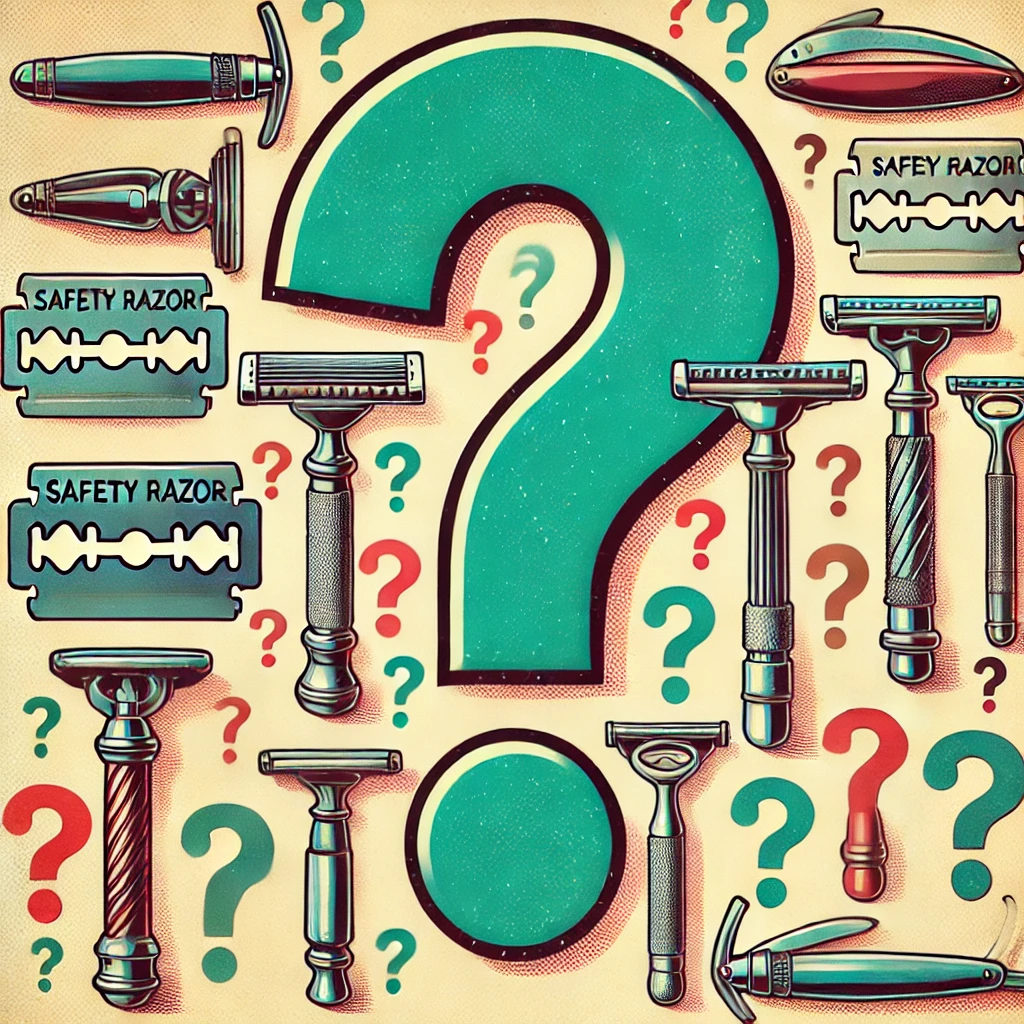Safety razors have made a big comeback in recent years as more people seek a closer, more affordable, and environmentally friendly shave. If you’re looking to ditch the disposable razors and switch to a safety razor, choosing the right one can be a little overwhelming, especially if you’re new to wet shaving. In this guide, we’ll break down everything you need to know about how to pick the best safety razor for your needs.
What is a Safety Razor?
Before diving into the specifics of choosing the best safety razor, let’s take a moment to understand what a safety razor is. A safety razor is a traditional tool used for shaving, consisting of a handle and a head that holds a replaceable blade. Unlike modern cartridge razors with multiple blades, safety razors use a single, sharp double-edged blade, offering precision and a closer shave.
Switching to a safety razor can also reduce plastic waste, save you money in the long run, and provide a smoother shave with fewer skin irritations.
Types of Safety Razors
Safety razors come in various designs and styles, and choosing the best one for you largely depends on your shaving needs, skin type, and personal preferences. Let’s explore the most common types of safety razors:
1. Single Edge vs. Double Edge Razors
The first distinction is between single-edge and double-edge safety razors. Most traditional safety razors you’ll encounter today are double-edged (DE), meaning that the blade has two sharp sides that can be used alternately. This is the standard choice for most shavers and provides excellent results.
- Single-edge razors have only one cutting side, and they can be slightly more aggressive, making them less suitable for beginners.
2. Closed Comb vs. Open Comb Razors
Another major factor to consider is whether the razor has a closed comb or open comb design. This affects the aggressiveness of the shave:
- Closed comb razors have a solid bar under the blade, providing more protection to the skin. This makes them perfect for beginners and those with sensitive skin. Closed comb razors offer a milder shave, which is ideal for everyday use.
- Open comb razors feature small teeth that expose more of the blade. This design allows more of the hair to make direct contact with the blade, providing a closer, more aggressive shave. Open comb razors are typically preferred by experienced wet shavers or those with thicker facial hair.
3. Adjustable vs. Non-Adjustable Razors
Some safety razors are adjustable, meaning you can change the blade exposure and adjust the aggressiveness of the shave. This is perfect for those who want to customize their shaving experience. However, they tend to be more expensive and can be overkill for beginners.
- Non-adjustable razors have a fixed blade exposure and are more straightforward to use. They offer consistent performance and are more budget-friendly, making them a popular choice for those new to wet shaving.
Handle Length and Weight
The handle length and weight of your safety razor are also important considerations, as they can affect the comfort and control of your shave. Safety razors come in varying lengths and weights, and your ideal razor will depend on your hand size and shaving technique.
- Short-handled razors (typically under 3.5 inches) are easier to maneuver and offer better control, making them a good option for those with smaller hands or who prefer precise shaves.
- Long-handled razors (over 4 inches) provide more leverage, which can be useful for those with larger hands or if you prefer more length to grip. These are often preferred by people shaving larger areas, such as legs or head.
Weight
When it comes to weight, heavier razors typically provide more control because the weight of the razor allows you to use less pressure while shaving, leading to fewer cuts and irritation. Lighter razors, on the other hand, require more manual control but can offer a gentler shaving experience.
Aggressiveness: How Much Blade Exposure Do You Need?
The term aggressiveness refers to how much of the blade is exposed and the angle at which it contacts your skin. Razors with higher blade exposure are considered more aggressive, providing a closer shave but with a higher risk of irritation or cuts. Mild razors have less blade exposure and are easier on the skin but may require more passes for a clean shave.
Who Should Choose a Mild Razor?
- Beginners
- Those with sensitive skin
- People who shave daily
Who Should Choose an Aggressive Razor?
- Experienced shavers
- Those with thick or coarse hair
- People who shave less frequently
Some razors are designed with a slanted head, also known as a slant-bar razor, which positions the blade at an angle, providing a very aggressive shave. Slant razors are usually recommended for advanced users with thick facial hair.
Material and Build Quality
When choosing a safety razor, it’s crucial to consider the material and build quality. Safety razors are typically made from metal, but the type of metal can affect the razor’s durability and weight. Most safety razors are made from stainless steel, zinc alloy, or chrome-plated brass.
- Stainless steel razors are highly durable, rust-resistant, and usually more expensive.
- Zinc alloy razors are lighter and often more affordable, but they can be less durable over time.
- Chrome-plated brass razors offer a balance between durability and price.
It’s also essential to check the overall build quality. A well-constructed razor will last years, while a cheaply made one may wear out or break after a few months.
Price Range: Balancing Cost and Value
The price of safety razors can vary greatly, from affordable options at around $20 to high-end razors costing over $100. While it may be tempting to opt for the cheapest razor, investing in a quality product will pay off in the long run.
Budget Razors ($20 – $50)
- Great for beginners
- Reliable and efficient
- Usually made from zinc or chrome-plated materials
Mid-Range Razors ($50 – $100)
- Better build quality
- More variety in handle length and weight
- Stainless steel and adjustable options
High-End Razors ($100+)
- Precision-engineered
- Made from premium materials like stainless steel
- Adjustable features for custom shaving experiences
Conclusion: How to Pick the Best Safety Razor for You
Choosing the best safety razor depends on your personal preferences, experience level, and shaving needs. For beginners, it’s often best to start with a mild, closed-comb razor with a non-adjustable head and a medium weight handle for better control. More experienced shavers may prefer an adjustable, open comb razor or even a slant-bar for the closest possible shave.
Take the time to research different models, read user reviews, and consider what works best for your skin type and shaving routine. By choosing the right safety razor, you can enjoy a smoother, more enjoyable shaving experience.
By following this guide, you’ll be well-equipped to pick the best safety razor that fits your needs perfectly. Don’t forget to pair it with quality shaving soap or cream and a good shaving brush for the ultimate wet shaving experience!

